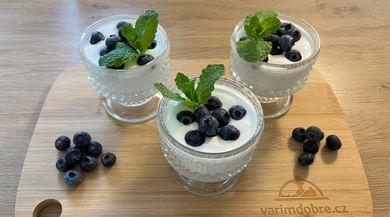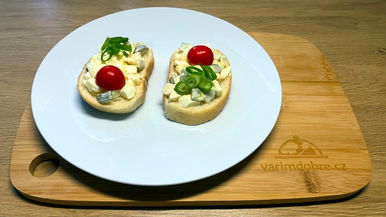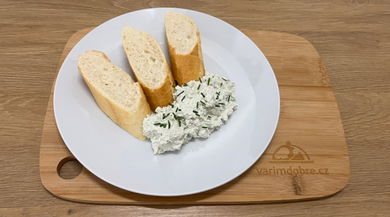Homemade mayonnaise
Try homemade mayonnaise, great for salad, meat and french fries. Homemade mayonnaise feels like a warm hello from a friendly kitchen. Grandmothers made it for celebrations and we love it today because we know exactly what goes in. When people search for homemade mayonnaise or how to make mayonnaise, they want a silky sauce for fries, salads and crispy chicken. That is exactly what you are about to whisk up.
Ingredients:
- 4 pieces chicken egg
- 250 milliliters sunflower oil
- 2 pinches salt
- 2 pinches black pepper (ground)
Nutrition values (per 100 g):
| Energy | 538 kcal 2 252 kJ | |
|---|---|---|
| Protein | 5,9 g | |
| Carbohydrates | 0,4 g | |
| - of which sugars | 0,2 g | |
| Fat | 57,8 g | |
| - saturated fat | 6,8 g | |
| - trans fat | 0,0 g | |
| - monounsaturated fat | 12,4 g | |
| - polyunsaturated fat | 36,1 g | |
| - cholesterol | 172,5 mg | |
| Fiber | 0,0 g | |
| Salt | 0,3 g | |
All nutritional data is approximate and subject to variation based on ingredient choice, brand, and measured amounts.
By clicking the table, you switch the view.
Nutrition values (for the whole recipe):
| Energy | 2 321 kcal 9 712 kJ | |
|---|---|---|
| Protein | 25,3 g | |
| Carbohydrates | 1,8 g | |
| - of which sugars | 0,8 g | |
| Fat | 249,0 g | |
| - saturated fat | 29,2 g | |
| - trans fat | 0,1 g | |
| - monounsaturated fat | 53,4 g | |
| - polyunsaturated fat | 155,8 g | |
| - cholesterol | 744 mg | |
| Fiber | 0,2 g | |
| Salt | 1,32 g | |
All nutritional data is approximate and subject to variation based on ingredient choice, brand, and measured amounts.
By clicking the table, you switch the view.
Recipe steps:
- Crack 3 eggs and separate the egg yolks from the egg whites (using the egg whites in another recipe, suitable for coconuts cookies, for example), then add the last, fourth egg with the egg whites.
- Add sunflower oil - not to be confused with another, for example olive oil is not suitable for mayonnaise at all.
- Dont forget 2 tablespoons of wine vinegar, salt and pepper.
- We mix everything to a uniform consistency.
Ingredients and balance:
The heart of good mayo is fresh egg yolk, neutral sunflower oil and a gentle lift from wine vinegar. Sunflower oil keeps the flavor clean and helps the emulsion form. Choose fresh or pasteurized eggs if you want extra peace of mind. Salt and pepper brighten the taste and a pinch of sugar can soften sharper edges. A teaspoon of warm water makes the texture lighter. A squeeze of lemon brings a lively note. This is your homemade mayonnaise and it should taste like you.
Technique notes:
Bring all ingredients to the same temperature so the emulsion holds steady. Start with eggs, vinegar, salt and pepper, then add the oil slowly. An immersion blender gives quick and reliable results. Set the blender at the bottom of the jar and blend without moving until the mixture turns pale and thick, then slowly lift the head to finish. Control thickness by the amount of oil. More oil means a firmer spread. Less oil and a touch of water make it softer. If you whisk by hand, pour the oil in a thin stream and be patient. The reward is a glossy bowl of mayo that does not split.
Safety and freshness:
Work clean and keep things cool. Fresh eggs and well washed tools make a difference. Pasteurized eggs are a thoughtful choice for kids and elders. Store the finished mayonnaise in the refrigerator in a sealed jar and enjoy it within two to three days. Mix it into cooled ingredients when making salads so the texture stays smooth.
Variations and ideas:
One bowl opens many doors. Tartar sauce is only a handful of chopped pickles, onion and a spoon of brine away. Garlic mayo loves roasted potatoes and grilled meats. Honey mustard is wonderful in sandwiches and burgers. Chilli mayo is perfect with fries and roasted vegetables. Herb mayo with parsley and chives brightens chicken salad. For a lighter feel fold in a spoon of sour cream. For a fresh sparkle add lemon zest. Readers who look for homemade mayonnaise without olive oil or for a neutral mayo will be happy with these gentle tweaks.
Kitchen uses:
Homemade mayo is a faithful friend to fries, fish and schnitzel. It is lovely in potato salad, baguettes and club sandwiches. It turns roasted vegetables into a festive salad and softens any quick dressing. For a speedy spread mix it with chopped hard boiled egg, chives and a bit of pickle. If some is left the next day it becomes the dream base for an easy tartar with fish.
Storage and keeping:
Your mayo keeps for two to three days in the fridge. Store it in a small clean jar and use a clean spoon every time. Take it out ten minutes before serving for the smoothest texture. If it feels too thick after chilling, stir in a teaspoon of warm water.
Troubleshooting:
If the emulsion fails do not worry. Put a fresh yolk or a spoon of warm water in a clean bowl and whisk in the broken mayo little by little. It usually binds right away and turns thick again. If the seasoning leans too salty add a tiny pinch of sugar and a drop of lemon. If it tastes too sharp, smooth it with a touch of water and a bit more oil.



